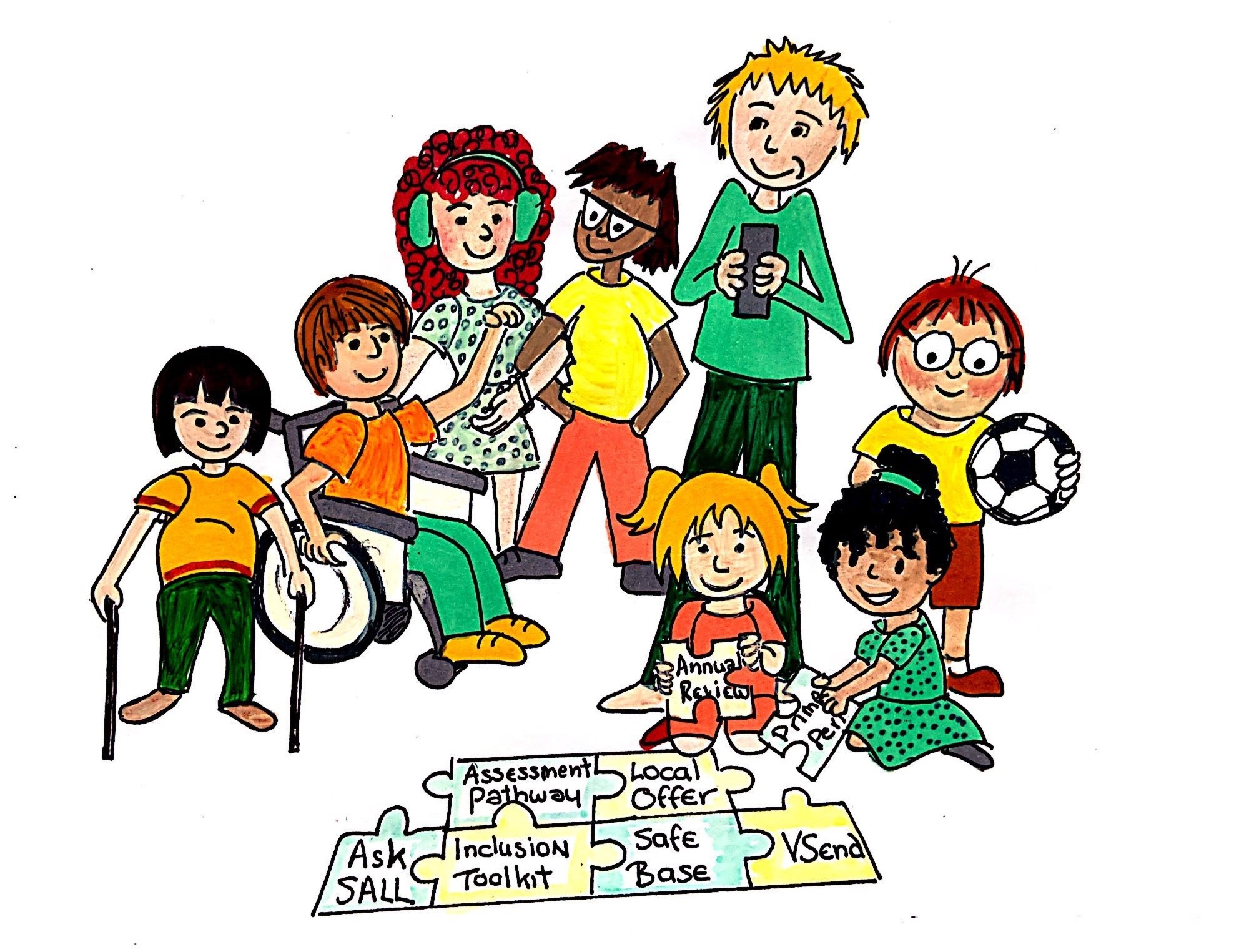Level 1-2 strategies to support high quality teaching
0-5
Consider the three characteristics of effective Learning
Take time to gather as much information as possible about the child and family. Use this alongside your own observations to ensure that provision is matched carefully to the stage of the child's development.
High Quality Teaching with a specific consideration for children with learning needs. The nursery teacher is accountable for the progress of the child within the nursery group working on differentiated activities.
High Quality Teaching meets the needs of all children and includes:
- flexible grouping arrangements, use of staffing and resources to allow for small group support and some individual learning programmes as appropriate
- differentiation of the foundation stage curriculum to facilitate small steps in learning
- learning outcomes (plan) and supportive approaches to be agreed with parents and delivered consistently (do) to focus on learning, social, self-help, independence and communication skills as appropriate
- staff to undertake a detailed assessment (assess) of the child’s strengths interests and needs. For example, structured observations assessments and completion of checklists in order to develop appropriate learning plans
- use of activities and equipment appropriate for the developmental level of the child and resources and displays that support independence
- use of visual, auditory and kinaesthetic approaches
- awareness that a child may need more time to complete tasks and that equality of access may mean that they need to do some things differently
- modelling, demonstrating and supporting expected behaviours
- consideration of an enabling environment to meet the needs of all children
- a monitoring system should be in place to assess child’s need, identify outcomes, implement support and monitor and evaluate progress
- Inclusion resources are available on LCC website with examples of documentation to support information gathering
- You might find the play section of Early Years First Call useful when supporting children's play
- Consider the support offered to parents/ carers, and how you involve them in their child's learning
- Settings can contact the relevant Health visitor through the Lincolnshire Heath Visitors Single Point of Access number 01522 843000
- Health Visitors 0-19 service also have a Facebook page which is full of useful information
- Pacey have some useful information about schemas
- Play Scotland have information about using loose parts to support children in their play,
- Some children will naturally need more support during their play. They may require practitioners to model, comment on play, and a great deal of repetition. For skilled early year's practitioners this is part of everyday teaching
- The Ofsted Early Years inspection handbook has a good definition of teaching in the footnote at the bottom of P.33
- Learning Playing and Interacting is a useful resource highlighting the importance of the role of the adult in quality play experiences.
- Create now and next prompts to enable the child to experience new interests
- Create a personal visual timetable in addition to the whole group visual timeline
- Laminate an A4 coloured card, add 3 Velcro dots and use this to add photo prompts to support the child to move to and from experiences. Remember that some children will respond better to actual objects rather than photographs. NAS have some good examples.
- Makaton website
- Termly planned reviews including the parent should take place to include the child’s voice. Referral to Portage services via the portage website
5-16
- high levels of challenge and expectation
- formative assessment and effective feedback is used to move pupils on in their learning
- encouragement and praise are used effectively to engage and motivate pupils
- in-class TA support, and in-class targeted teacher support
- increased visual aids. For example, visual timetables
- illustrated ACE dictionaries
- use of writing frames and scaffolding
- support for key words and subject specific vocabulary
- access to ICT, including word processor
- access to whole school homework clubs, differentiated or reduced or targeted homework (For example, reading only)
- basic skills course and revision classes
- other strategies from dyslexia-friendly schools initiative
- flexible grouping arrangements
- differentiated curriculum planning and engaging activities
- differentiated questioning, modelling and explaining
- use of visual, auditory and kinaesthetic approaches
- barriers to learning are considered and appropriate arrangements made to overcome these
- environmental considerations are made to meet the needs of all pupils. For example, seating position, personal space, classroom layouts, access to resources, displays and signage
- a broad and balanced curriculum is planned and accessed by all pupils
- the school is flexible in adapting the core offer to meet needs of all pupils
- opportunities are provided for small group work based on identified need
- access to grouping that enables pupils to work with peers who will provide good role models for language and communication skills and for co-operative and independent application to task
- alternative methods of recording, including the use of ICT
- modelling, explaining and questioning
- links to prior learning made explicit to pupils
- opportunities for pupils to verbalise their learning
- opportunities for pre- and post-learning
- link learning to real world situations
- the pitch and pace are appropriate to the learning needs of the pupils, ensuring effective challenge
- reasonable adjustments will be made to enable pupils to participate in appropriate school assessments and statutory assessment and tasks. Evidence will be gathered for access arrangements for external assessment
Cognition and learning difficulties (subject specific)
- strategies should be implemented, monitored and amended as appropriate
- pupil's self-assessment routinely used to set individual learning targets
Literacy
- daily use of well researched, evidence-based programmes for reading and spelling. For example, letters and sounds, read write inc.
- focused guided reading and writing groups are led by a teacher
- support to access reading materials. For example, reading buddy, adult help or use of ICT
- effective spelling strategies and provision of subject specific spelling lists, specialist dictionaries and thesaurus
- appropriate learning resources are available through all the phases and pupils are taught how to use them. For example, pencil grips, sloping boards, concrete materials, spelling aids, talking tins
Numeracy
- access throughout all phases to concrete resources. For example, hundred squares, number lines, Numicon, cubes
- teach in the sequence of language, concrete resources and diagrams before symbols
- use of a calculator when calculation is not the focus of the lesson. For example, when solving word problems
- opportunities for over learning such as through games
- planned regular revisiting of prior learning
- link learning to real world situations and make explicit other cross curricular links
Developmental Coordination Difficulties (DCD)
- core stability. For example, wobble cushion, exercises and games
- correct seating position. For example, appropriate size tables and chairs
- development of letter formation. For example, using a multi-sensory handwriting scheme, pencil grips, or sloping board.
- gross motor skills. For example, throwing, catching and hopping
- fine motor skills. For example, hand and arm exercises, specialist scissors, specialist rulers, pegboard, threading, play dough, or putting pegs on washing lines.
- sequencing and organisation skills. For example, first and next boards, writing frames, visual timetables
- appropriate support should be put in place as soon as a need is identified. A formal diagnosis is not required for support in the classroom. However, a formal diagnosis would help to give a clearer picture of a pupil's areas of strength and weakness
Memory
- slow down delivery of information
- chunk information and allow thinking time
- provide visual support. For example, gesture , diagrams or illustrations
- pupils have access to memory aids. For example, alphabet strips, number squares, post –its, keyword lists, table squares
- use of planning tools. For example, mind mapping
- provide written instructions alongside verbal instructions (if they read)


